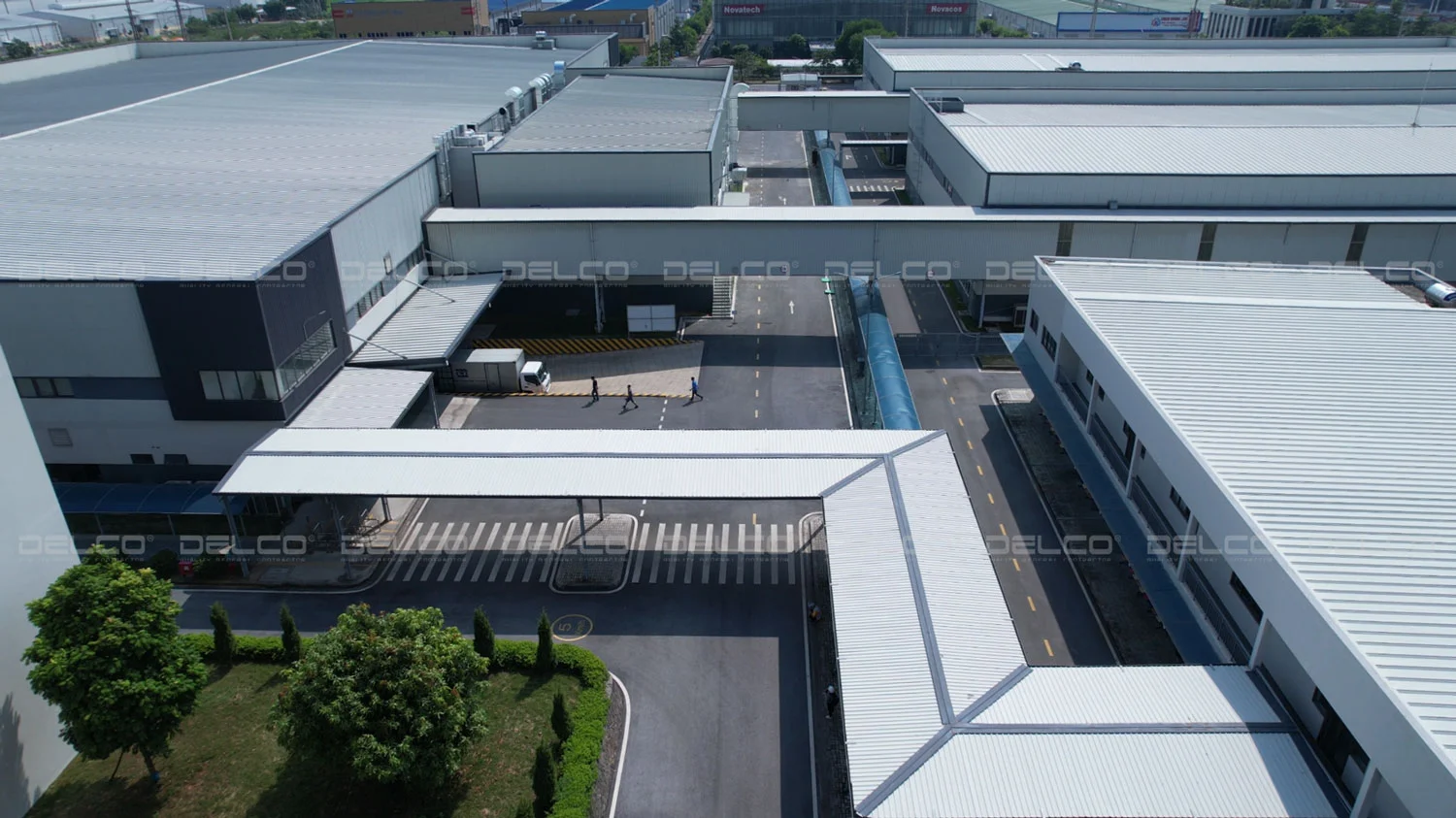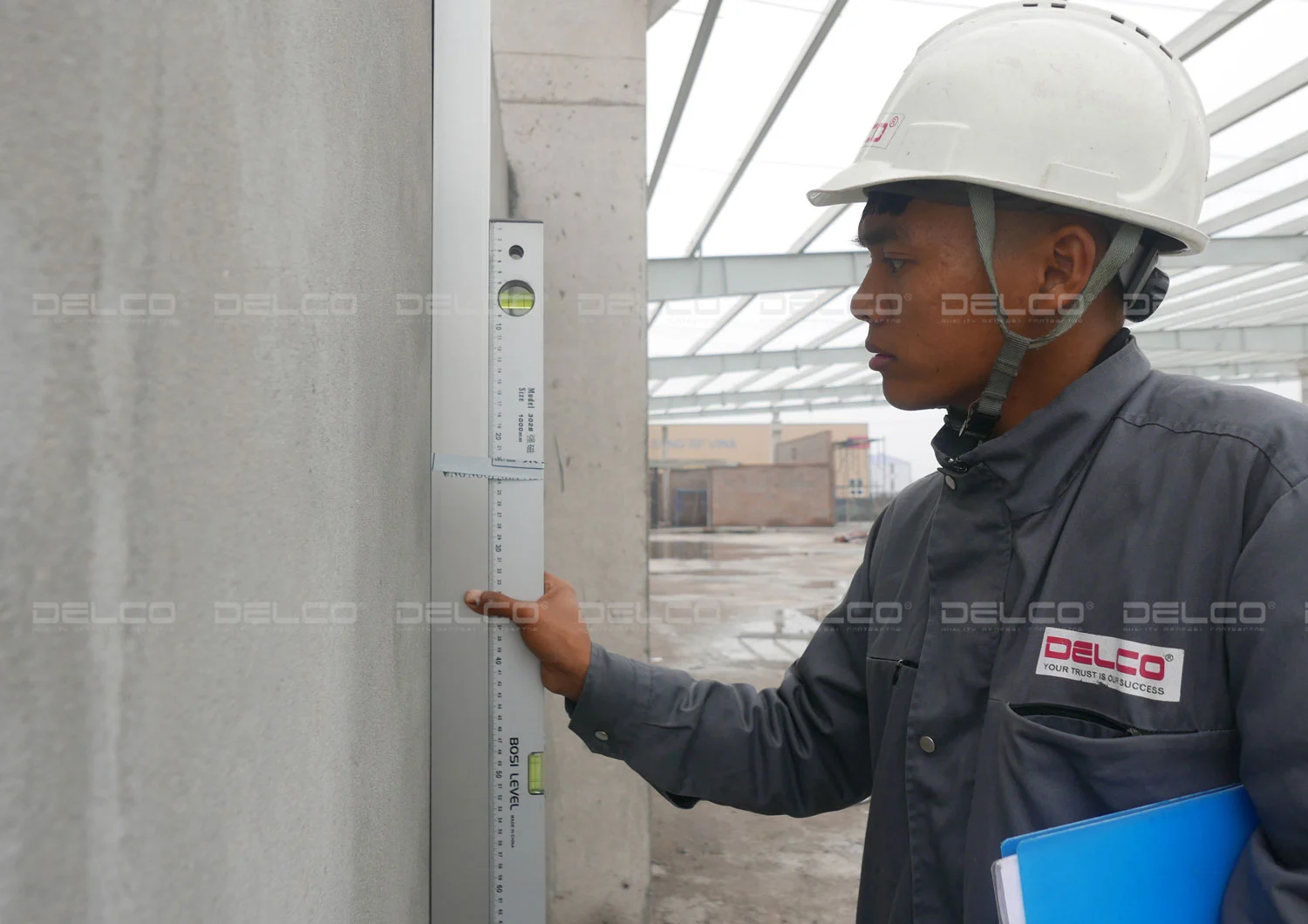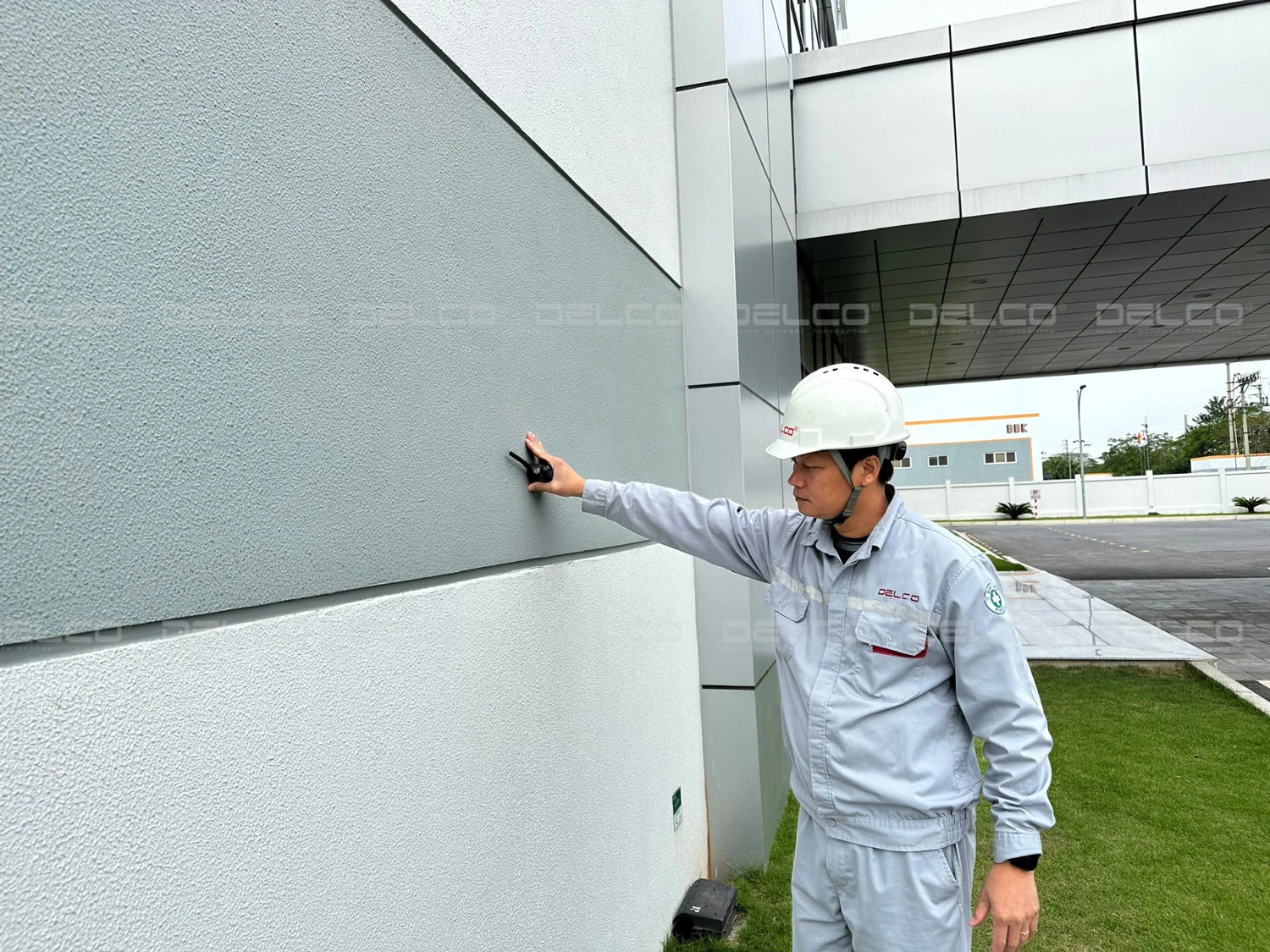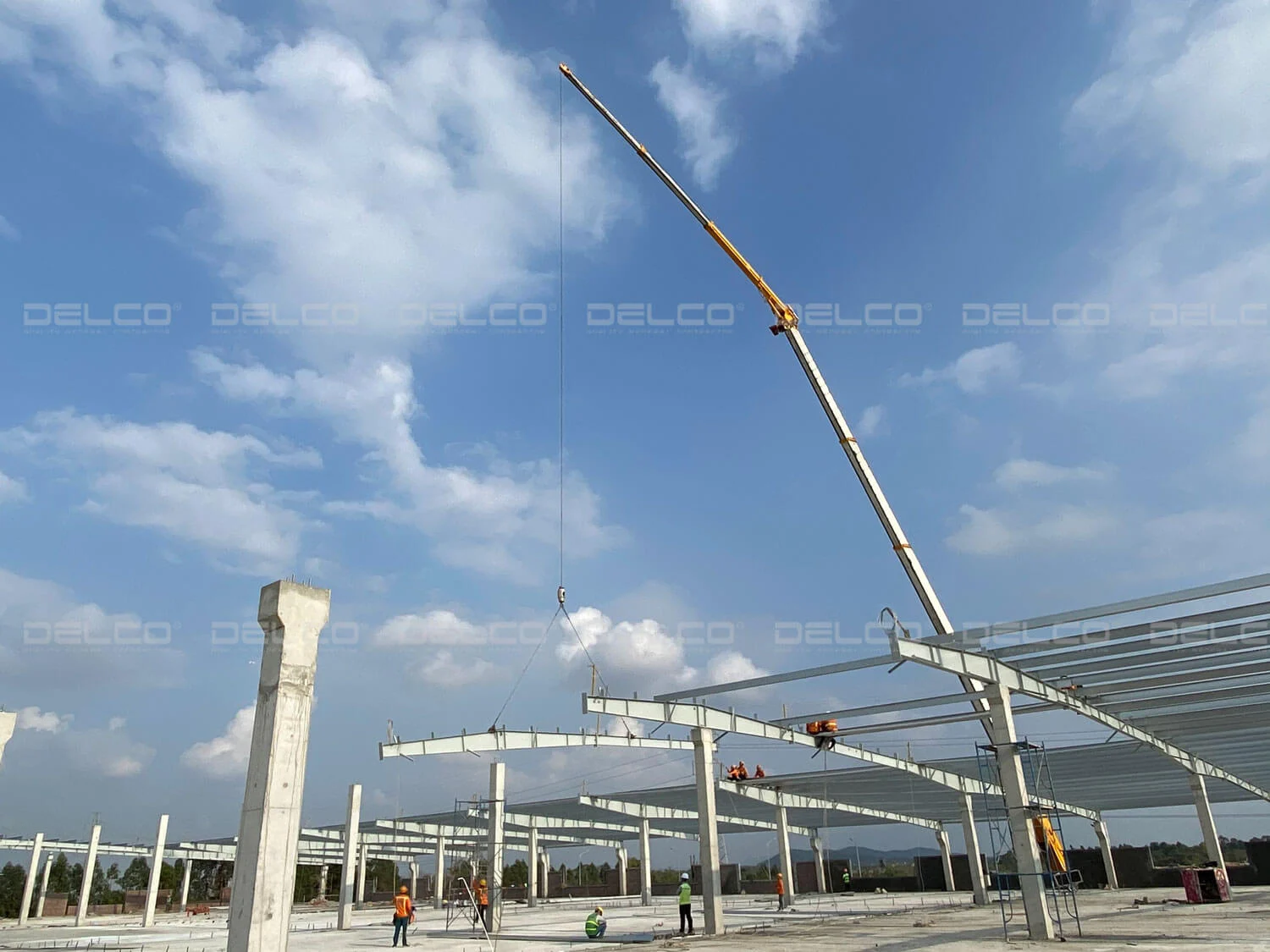There are various types of industrial air conditioners available for factory use, depending on factors such as space, cooling needs, investment costs, and clean room requirements. This article lists the common types of air conditioners for factories and plants in Vietnam and analyzes the advantages and disadvantages of each.
Split AC System
The split AC system is a type of air conditioner that features a separate outdoor unit (compressor) and indoor unit. It is widely used due to its flexible capacity, making it suitable for a variety of spaces, from residential air conditioning to factories and commercial buildings.
What types of split AC systems are used in factories?
The main types of split air conditioners include:
- Floor-standing air conditioners
- Wall-mounted air conditioners
- Ceiling-ducted air conditioners
- Ceiling cassette air conditioners
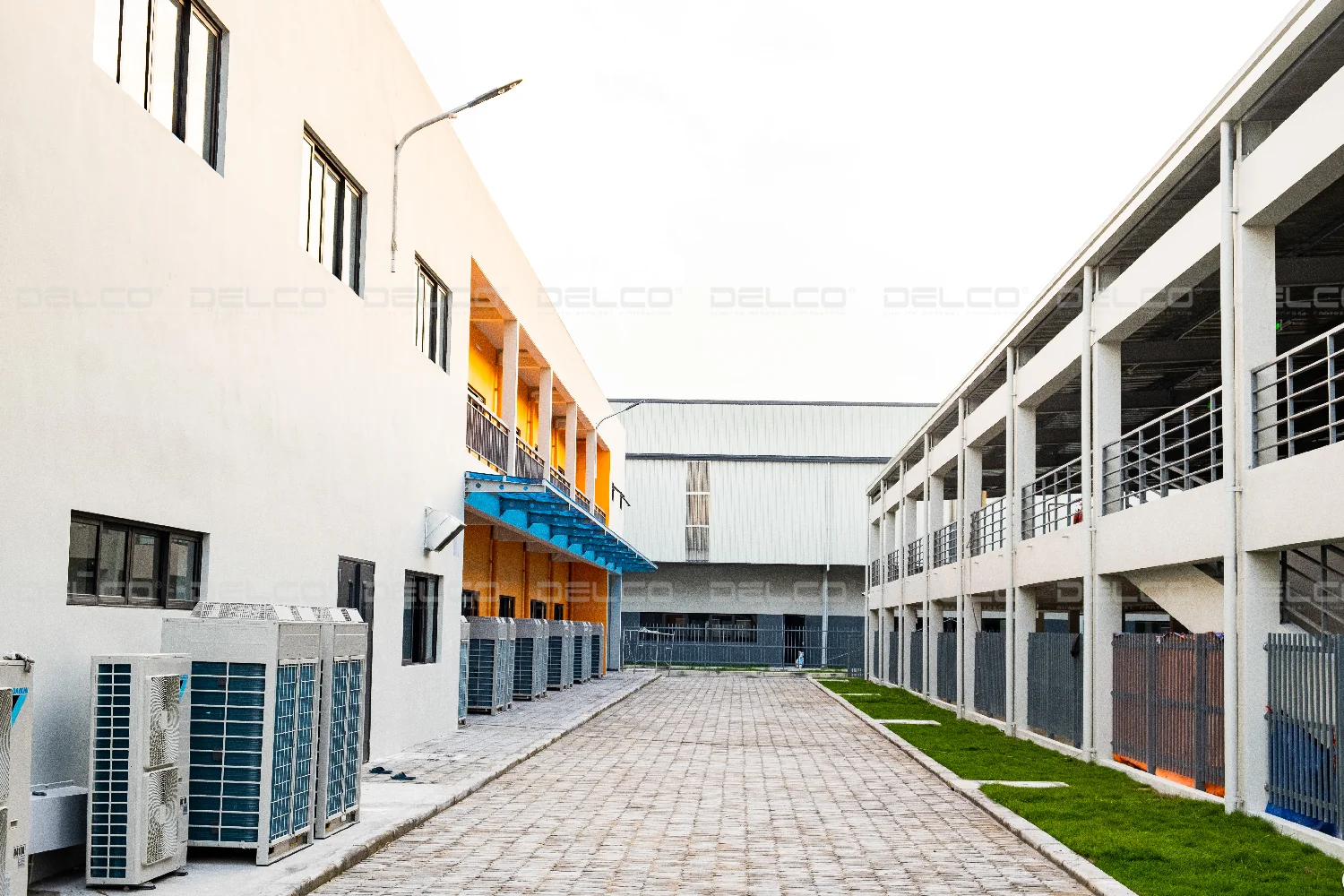
This article will focus on three types of split AC systems commonly used in factories: floor-standing air conditioners, ceiling-ducted air conditioners, and ceiling cassette air conditioners.
Floor-Standing Air Conditioner
Also known as a floor-mounted air conditioner, this system is designed with a large blower fan, offering high stability and fast cooling. Floor-standing air conditioners are often used in large spaces where strong and even airflow is required.

Daikin floor-standing industrial air conditioner for factories and office buildings – Image from the Power Plus Technology Factory Project, with DELCO as the Design-Build Contractor and MEP Contractor.
Types of Floor-Standing Air Conditioners for Factories
- Direct Air-Blowing Floor-Standing Air Conditioner: This system provides rapid cooling through a powerful blower, allowing air to spread quickly throughout the space.
- Ducted Floor-Standing Air Conditioner: This type connects to air ducts, distributing cold air to multiple areas within the factory.

Daikin floor-standing industrial air conditioner for factories – Image from the DORCO Living Vina Factory in Ha Nam, with DELCO as the General Contractor for construction and MEP system.
Advantages of Floor-Standing Air Conditioners
- Fast and even cooling.
- High cooling capacity, ideal for large spaces.
- Easy to relocate and perform regular maintenance.
Disadvantages of Floor-Standing Air Conditioners
- Relatively high investment cost.
- Requires architectural and interior designs that accommodate the air conditioner’s placement.
- Can be noisy (especially direct air-blowing types).
Ceiling cassette air conditioner
Ceiling cassette air conditioners are a popular industrial air conditioner for factories. Most of the indoor unit is hidden in the ceiling, with only the square panel exposed, optimizing aesthetics and space.
Cassette air conditioners are commonly used in factories and offices due to their strong cooling capability, low noise levels, and high airflow, which distributes air in multiple directions.

Ceiling Cassette Air Conditioner Installed by DELCO
Advantages of Ceiling Cassette Air Conditioners
- High aesthetic appeal with a concealed ceiling design.
- Large airflow capacity, providing fast and even cooling.
- Reasonable investment cost.
- Low noise levels, creating a more comfortable working environment.
Disadvantages of Ceiling Cassette Air Conditioners
- The cost of cassette air conditioners for factories is relatively high.
- Requires sufficient ceiling height for installation.
- Best suited for relatively large spaces.
- Maintenance and repair can be complex, requiring specialized HVAC contractors.
Ceiling-Ducted Air Conditioner
Ceiling-ducted air conditioners, also known as concealed ceiling air conditioners, are installed in the ceiling and distribute cool air through ducts to various areas. This type of industrial air conditioner is favored in factories and office buildings due to its aesthetic appeal and efficient air distribution.
The ceiling-ducted system provides even cooling across large spaces and comes in a variety of capacities, depending on the specific needs of the factory. It can be either a split or central AC system, depending on the design and budget of the investor.

Industrial ceiling-ducted air conditioner for factories – Image from the Pham Nguyen Confectionery Factory project, with DELCO as the General Contractor and MEP Contractor
Advantages of Ceiling-Ducted Air Conditioners
- High aesthetic appeal, suitable for many spaces.
- Even cooling distribution across the entire space.
- Cost-effective, especially for large spaces like factories and offices.
Disadvantages of Ceiling-Ducted Air Conditioners
- Cannot achieve deep cooling.
- Limited air purification and odor removal capabilities.
- Requires regular inspection and maintenance, with a complex process for warranty and upkeep.
Central AC System
The central AC system is an industrial cooling solution for large spaces such as factories, office buildings, and shopping centers, where efficient and flexible temperature control is needed. Unlike split systems, the central AC system consists of one outdoor unit connected to multiple indoor units, allowing synchronized temperature control in various areas.
What Types of Central AC Systems Are Used in Factories
The most common types of central AC systems used in factories, office buildings, and shopping malls in Vietnam include:
- VRF (Variable Refrigerant Flow) System
- VRV (Daikin’s Variable Refrigerant Volume) System
- Chiller System
VRF Central AC System
The VRF (Variable Refrigerant Flow) system is a central AC system that uses refrigerant flow control technology, enabling one outdoor unit to connect with multiple indoor units to supply cool or warm air to different areas within a building or factory. The VRF system adjusts the refrigerant flow according to the cooling demand of each space, optimizing energy use and operational efficiency.
VRF systems are commonly used in large factories, office buildings, shopping centers, and hotels where multiple rooms or areas require separate temperature control. In Vietnam, many leading air conditioner brands offer VRF central AC solutions, including Samsung (VRF DVM), Panasonic (VRF FSV), Toshiba (SMMS), and LG (Multi V VRF).
Advantages of VRF Systems
- Independent temperature control for multiple areas simultaneously.
- Energy-saving efficiency.
- High aesthetic value.
- Quiet operation with minimal noise.
Disadvantages of VRF Systems:
- High initial investment cost.
- Requires an experienced HVAC contractor with advanced technical skills for system design, installation, and maintenance.

Samsung VRF Central AC System for Office Buildings – Image from the Toyo Solar Factory project in Phu Tho, with DELCO as the Design-Build Contractor for the office interior.
VRV Central AC System
The VRV (Variable Refrigerant Volume) system is a type of central air conditioning technology developed exclusively by Daikin. This system allows for precise regulation of refrigerant flow, enabling the outdoor unit to adjust the amount of refrigerant according to the demand of each indoor unit. This optimizes cooling efficiency and saves energy.
Advantages of VRV Systems
- High initial investment cost.
- Requires a high level of expertise from HVAC contractors for system design, installation, and maintenance.
- Exclusivity: VRV technology is developed and distributed solely by Daikin.
Disadvantages of VRV Systems:
- High initial investment cost.
- Requires a high level of expertise from HVAC contractors for system design, installation, and maintenance.
- Exclusivity: VRV technology is developed and distributed solely by Daikin.
Chiller AC System
The Chiller system is another central air conditioning solution, often used in large factories or shopping centers. Chillers are usually paired with AHU (Air Handling Units) or FCU (Fan Coil Units) to purify air, control humidity, supply fresh air, and distribute cooled air to large spaces.

Chiller System for Factories – Image from the DAINESE Vietnam Factory project, with DELCO as the MEP General Contractor.
Chiller systems are commonly used in large-scale production plants, factories, or commercial centers with extensive floor areas, where robust and continuous cooling is required. Compared to VRV and VRF systems, Chillers provide more effective cooling over wide areas, but the initial investment cost is higher.

Chillers integrated with smart factory systems for energy savings – A system designed and installed by DELCO.
Advantages of Chiller Systems
Ideal for large-scale projects that require extensive cooling.
High cooling efficiency with stable and even distribution.
Durable operation with minimal maintenance needs.
Disadvantages of Chiller Systems
- High initial investment cost.
- Complex installation, maintenance, and servicing, requiring a highly skilled HVAC contractor.
- Requires large space for equipment installation.
Xem thêm: HVAC technology trends in Vietnam in 2024
Xem thêm: 12 effective anti-heat options for factories


